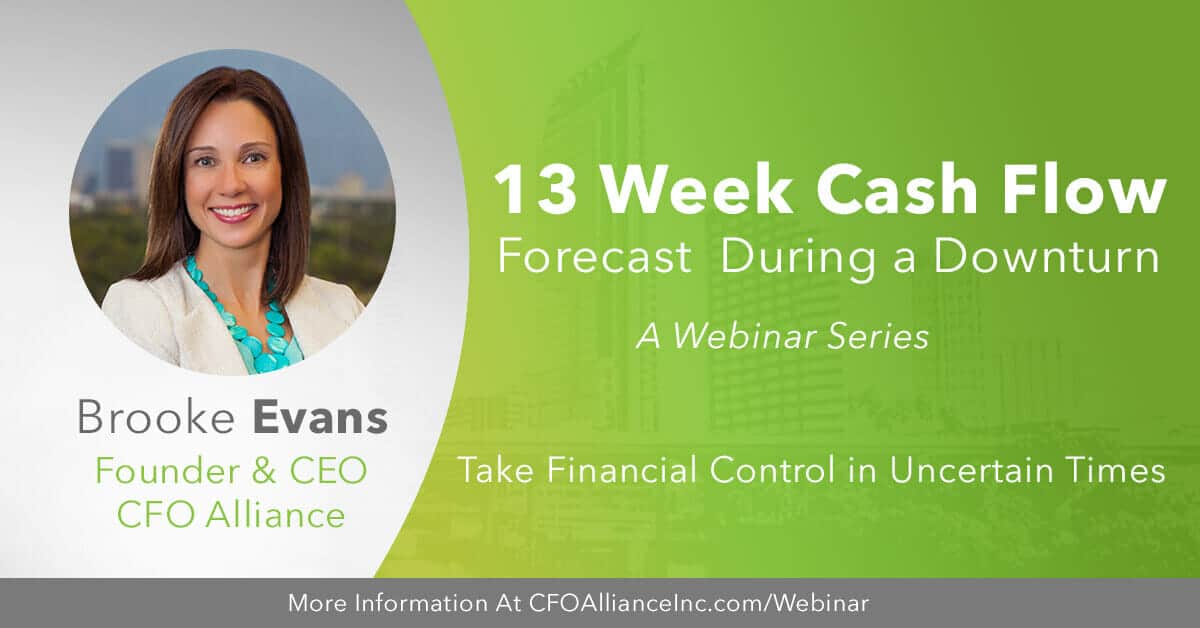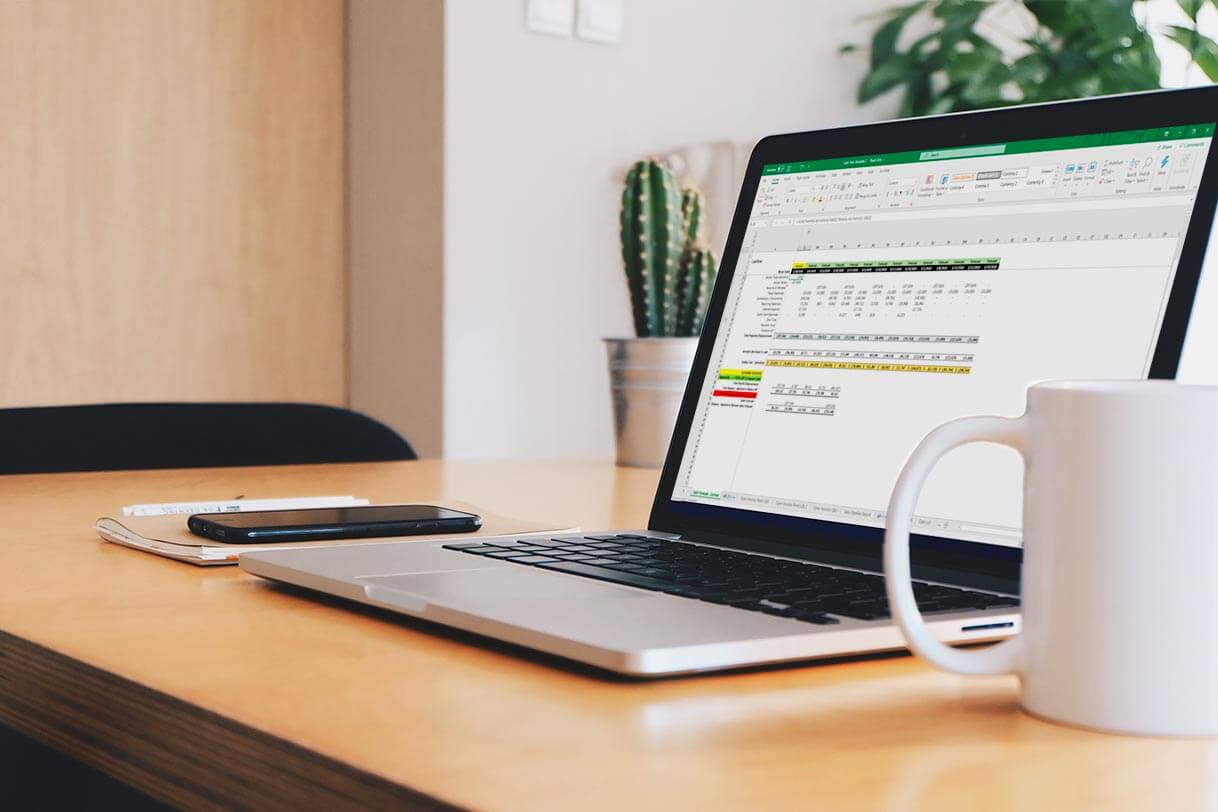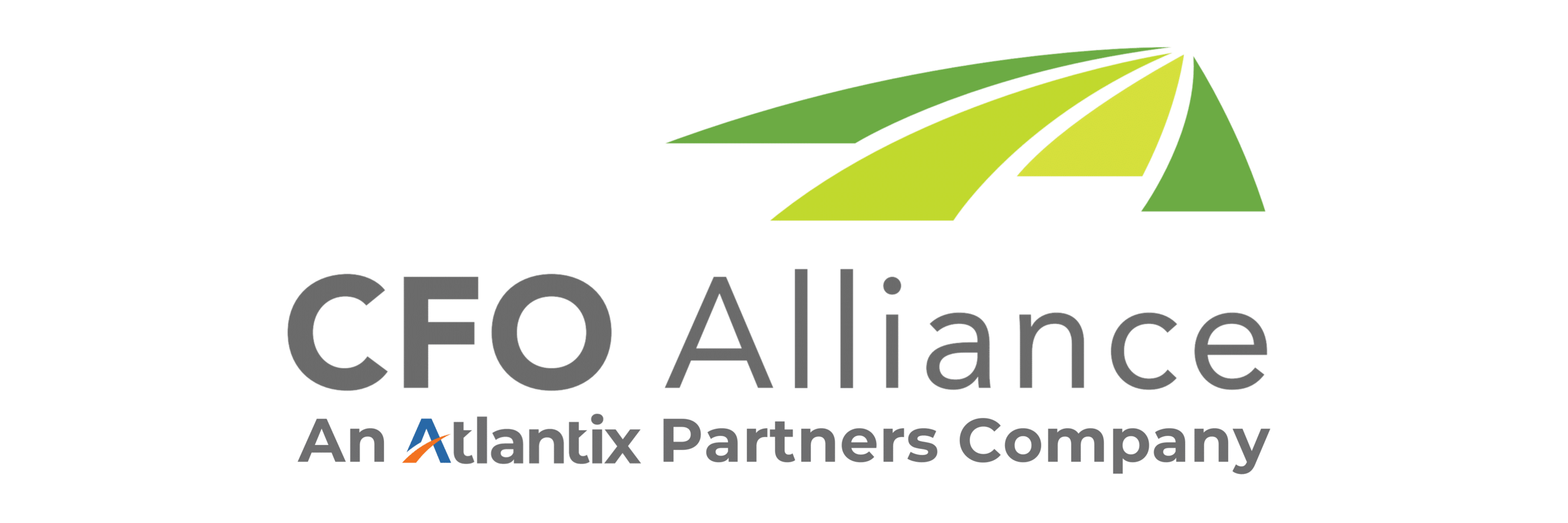You Got Your CARES Act Stimulus Funds, Are You Ready to Put that Money To Work?
If you’re a business owner who has taken advantage of the CARES Act Stimulus Package Aid, and need help maximizing the use and tracking of the funds to avoid penalties, we can help you.
- PPP Updates
- Tax Credit Updates
- Payroll & Compensation Updates
- EMPLOYER TAX CREDITS Updates
Contact Us Today To Schedule a Meeting With One of Our Consultants
Your Financial Business Recovery Plan
The Coronavirus, Aid, Relief, and Economic Security Act (CARES) launched on April 1st, and businesses nationwide are starting to receive their funds.
To qualify for forgiveness, you will need to provide the business use of those funds.
Excellent documentation, precise bookkeeping, and accounting will be a must in the upcoming months—That’s where we can help.
24-week Extension & New Loan Terms:
The funds must be used up within 24 weeks from the day of funding or by December 31st, 2020. Whichever comes first.
If a PPP loan received an SBA loan number on or after June 5th, 2020, the loan has a five-year maturity.
If a PPP loan received an SBA loan number before June 5th, 2020, the loan has a two-year maturity, unless the borrower and lender mutually agree to extend the term of the loan to five years. The interest is 1%, and payments can be deferred for 6 months; however, interest will accrue during that deferred period.
New FTE guidelines: :
What is an FTE Reduction Safe Harbor and who qualifies?
A safe harbor exempts specific borrowers from loan forgiveness reduction based on FTE levels.
Both conditions must be met to qualify:
(i) The Borrower reduced its FTE employee levels in the period beginning February 15th, 2020 and ending April 26th, 2020 and (ii) the Borrower then restored its FTE employee levels by not later than December 31st,2020 to its FTE employees levels in the Borrower’s pay period that included February 15th, 2020.
What if I am unable to get back to my FTE before December 31st, 2020?
The PPPFA added a new safe harbor to allow borrowers to avoid forgiveness reduction due to a reduction in FTE if the Borrower can document either: (i) An inability to rehire individuals who were employees on February 15th, 2020, and an inability to hire similarly qualified employees for unfilled positions on or before December 31st, 2020, or (ii) An inability to return to the same level of business activity as of February 15th, 2020 due to compliance with the CDC, Health and Human Services, or OSHA during the period between March 1st, 2020 and ending December 31st, 2020.
FFCRA Tax Credit Options
The FFCRA offers two options for employers to receive tax credits to cover the costs of employees who need to take time off.

Emergency Sick Leave
Who qualifies?
Businesses with less than 500 employees.
What does it cover?
Option 1: Wages paid to employees unable to work/telework due to mandated isolation from Covid19, self- quarantine as advised by a healthcare professional, or experiencing any symptoms related to Covid19 and seeking a medical diagnosis.
Two weeks/ 10 days (up to 80 hours) of paid sick leave at the employee’s regular pay rate.
- 10-day pay based on pay rate or min wage (whichever is higher)
- Cannot exceed $511/day and $5,110 total for isolation/quarantine/symptom-related for 10 days.
Option 2: Wages paid to employees unable to work/telework due to caring for someone subject to quarantine or must take care of a minor child under 18 years due to school/childcare being closed from Covid19.
- Two weeks/ 10 days (up to 80 hours) of paid sick leave at 2/3rds of pay rate
- $200/day to $2000 total for caring for others
How can I claim this tax credit?
Complete Form 941 (Quarterly Federal Tax Return) and Form 7200 (Advance of Employer Credits due to Covid19). Compute the total pay of the employee depending on which tax credit option is best suited for their requested leave.
It is important to hold onto records to support the employee’s leave.
2) Employee’s name, date(s) of leave, Statement explaining the reason for leave in which it abides by the specified leave reasons of the FFCRA and why the employee is unable to work/telework.
- If leave is due to advised quarantine of employee/other: Letter advising employee to quarantine from the healthcare professional. If of other, a letter with the name of the person and relation to the employee advising quarantine.
- If leave is due to childcare: Letter with name and age of the child, name of care/school that is closed, and reasoning that no one else is able to provide care to the child within the period of the requested leave.
Extended Family & Medical Leave
WHO QUALIFIES?
Businesses with less than 500 employees.
What does it cover?
• Wages paid to employees unable to work/telework due to a minor child being taken care of from schools and childcare being closed from Covid19.
• Paid leave is 2/3rds of employee pay not exceeding $12,000 total over the course of a 12-week period.
- Pay is enacted after the first 10 days (2 weeks) of unfunded leave.
- Total leave is 12 weeks.
- The employee is eligible to use personal PTO or sick leave through an employer as long as it is not forced by the employer. The employee can also use Emergency Sick Leave for the first 10 unpaid days.
How can I claim this tax credit?
Complete Form 941 (Quarterly Federal Tax Return) and Form 7200 (Advance of Employer Credits due to Covid19). Compute the total pay of the employee depending on which tax credit option is best suited for their requested leave.
It is important to hold onto records to support the employee’s leave.
2) Employee’s name, date(s) of leave, Statement explaining the reason for leave in which it abides by the specified leave reasons of the FFCRA and why the employee is unable to work/telework.
- If leave is due to advised quarantine of employee/other: Letter advising employee to quarantine from the healthcare professional. If of other, a letter with the name of the person and relation to the employee advising quarantine.
- If leave is due to childcare: Letter with name and age of the child, name of care/school that is closed, and reasoning that no one else is able to provide care to the child within the period of the requested leave.
NOTE For businesses with less than 50:
Employers with fewer than 50 employees may qualify for an exemption from the FFCRA if doing so will increase expenses and other financial responsibilities above the business’ revenue that the business would have to stop operating OR employee leave would pose a risk to the business’ finances and operation due to the employee’s specific expertise/duties OR the employer cannot find any other qualified workers to take over employee seeking leave. It is important employers keep documentation showing reasoning that leave cannot be given.
CARES Act & Paycheck Protection Plan
Payroll & Compensation Updates:
How much do I need to spend on payroll to get forgiveness?
Borrowers must spend at least 60% of their PPP funding on approved payroll, or they cannot receive full loan forgiveness. The other 40% may be used for qualifying non-payroll costs.
What is the total amount of cash compensation per employee that is eligible for forgiveness?
For borrowers utilizing the newly extended 24-week forgiveness period, the amount is $46,154 (not including covered benefits). For borrowers utilizing the 8-week forgiveness period, the amount remains at $15,385.
What amount of payroll can be spent on owner compensation by individuals with self-employment income?
Owners who file a Schedule C or F can time their earnings by 2.5 months of 2019 net profits but capped at $20,833.
- SBA LOAN OPTIONS
- EMPLOYER TAX CREDITS
- Families First Coronavirus Response Act
- Frequently Asked Questions
SBA LOAN OPTIONS
PAYCHECK PROTECTION PLAN (PPP)
WHAT IS IT?
Paycheck Protection Plan is part of the CARES Act. It is specifically made to help retain employees and help pay business operations such as mortgage/lease and utility costs.
Please Note: The deadline for small businesses to apply for forgivable PPP loans was June 30th, 2020. At this time, a decision on offering a second round has not been made.
How much does it offer?
The offered loan amount is our average monthly payroll costs from 2019 times 2.5, equaling no more than $10 million. The funds must be used up within 24 weeks from the day of funding or by December 31st, 2020. Whichever comes first.
Who Qualifies?
Businesses with less than 500 employees that qualify under the SBA size standards including sole proprietors, independent contractors, self-employed, tribal businesses, 501c(19) veteran organizations, restaurant/hotels falling in NAICS code 72, 501c(3) nonprofits including religious organizations, SBA franchises.
Please note that businesses in certain industries can have more than 500 employees if they meet the applicable SBA employee-based size standard. Please visit www.sba.gov/size for more information.
How do I apply?
It is issued directly to the bank lender that is SBA-approved to apply. Many banks will begin to roll out online forms to apply with. It is recommended to apply to a lender that you already have an established account/ line of credit with.
What are the loan terms?
This loan has forgiveness eligibility. If you use the fund specifically for payroll-related costs, utility, and mortgage/lease payments, you can apply to have this loan forgiven.
If a PPP loan received an SBA loan number on or after June 5th, 2020, the loan has a five-year maturity. If a PPP loan received an SBA loan number before June 5th, 2020, the loan has a two-year maturity, unless the borrower and lender mutually agree to extend the term of the loan to five years.
The interest is 1% and payments can be deferred for 6 months; however, interest will accrue during that deferred period.
What is the deadline?
The deadline to apply is June 30th, 2020. We recommend applying as soon as possible as there is a $350 billion budget for the amount that is able to be paid out to businesses.
Is there a collateral or personal guaranty?
No, this loan does not require a collateral or personal guarantee.
ECONOMIC INJURY DISASTER LOAN (EIDL)
WHAT IS IT?
Economic Injury Disaster Loan is an SBA direct loan that is meant to cover payroll, working capital, inventory, equipment, and other business operation costs.
How much does it offer?
They offer up to $2 million, which is determined by the SBA based on how much your business has been affected. It covers period from January 31st, 2020 to December 31st, 2020
Who Qualifies?
Businesses with less than 500 employees that qualify under the SBA size standards and those with less than 500 employees including: private nonprofit organizations, ESOPS, independent contractors, sole proprietors, and tribal businesses.
HOW DO I APPLY?
The application is found here: https://covid19relief.sba.gov/
This is directly through the SBA and approved based on the business’s credit score and financial need.
WHAT ARE THE LOAN TERMS?
If you are in need of financial relief as soon as possible, you may be eligible to receive a $10k grant, even more, your loan application is processed. This grant will not need to be repaid, even if your loan application is denied.
NOTE: This loan is unforgivable. It has a maximum of a 30-year term, with 3.75% interest for businesses and 2.75% interest for nonprofits. Payments are deferred up to one year.
What is the deadline?
The deadline to apply is December 31st, 2020.
Is there a collateral or personal guaranty?
There is collateral for loans over $25k and a personal guaranty for loans over $200k.
EMPLOYER TAX CREDITS
Employee Retention Credit
Who qualifies?
Employers who were ordered to shut down, or if gross receipts fell below 50% of the same quarter in 2019, and who did not receive a PPP loan authorized under the CARES Act are eligible for the Employee Retention Credit. There is no cap on the number of employees for businesses.
What assistance does this give?
This assistance provides a refundable payroll tax credit of up to 50% on all qualified wages paid to employees up to $10,000 ($5,000 per employee for the year with tax credit applied).
The credit is allowed against the employer’s share of social security taxes. Employers that averaged 100 or fewer full-time employees: qualified wages are wages paid to all employees. Employers with more than 100 full-time employers: qualified wages are the wages paid to employees who are not providing services.
What periods does this cover?
Wages qualifying for pay between March 12th through December 31st, 2020
How can I take advantage of this credit?
Fill out IRS form 941 or requesting an advance of the credit from the IRS.
Can I use this credit with another?
You are eligible to take out an Employee Retention Credit and an FFCRA Tax Credit Option as long as they are not used for the same wages.
Payroll Tax Deferral Credit
WHO QUALIFIES?
There is no employee cap for businesses.
What assistance does this give?
This credit defers applicable payroll taxes (6.2% OASDI) for future payment.
What periods does this cover?
Wages qualifying for deferral are from March 27th through December 31st, 2020.
When do I have to pay the deferred payroll taxes?
First half of payment must be made on or before December 31st, 2021 and Second half of payment must be made on or before December 31st, 2022.
FYI: You are ineligible for this credit if you already took out a Paycheck Protection Plan and it has been forgiven.
FAQS
Who gets counted in the 500 or less employee provision?
Employees who are full-time, part-time, seasonal. If affiliates are involved, you must also count that business’ employees.
What is included in payroll?
Salary, wage, commission, cash tip, vacation/medical/sick leave, allowance for dismissal or separation, group health care benefits including insurance premiums, retirement benefit, state or local tax assessed on the salary of an employee up to an annual rate of $100k.
- Self Employed/I-C/Sole Proprietors: the sum of payments of any compensation that is wage, commission, income, net earnings of self-employment that is in an amount no more than 100k, as pro-rated for the covered period. Documents like 1099-MISC and paycheck receipts will be needed for verification.
What is excluded in payroll?
Salaries of employees in excess of $100,000, employees whose primary residence is outside of the U.S, and independent contractors. Independent contractors are eligible for their own PPP.
How long do I have to use the funds received from a PPP loan?
You have 24 weeks from funding date or December 31, 2020, whichever comes first, to use the funds to qualify for loan forgiveness. However, borrowers who received a loan before June 5th, 2020, may elect for the covered period to remain at 8 weeks.
Are there salary caps for employees when determining monthly payroll amounts?
To be eligible for PPP, the salary of employees cannot be $100,000 or more ($8,333 a month). Health and retirement benefits and state and local taxes are not included when calculating the salary.
How much do I need to spend on payroll to get forgiveness?
Borrowers must spend at least 60% of their PPP funding on approved payroll, or they cannot receive full loan forgiveness. The other 40% may be used for qualifying non-payroll costs.
Can I take out a PPP if I already have an 7a SBA loan?
Yes, you may take out a PPP loan even if you have a prior 7a SBA loan.
What paperwork should I keep in mind to apply for PPP?
• SBA Form 2483 (Paycheck Protection Program Application)
• Payroll reports and tax filings for the past 12 months (January-December 2019)
• Seasonal Businesses: Payroll reports and payroll tax filings from February 15th,2019- June 30th, 2019
• New Businesses: Payroll reports and payroll tax filings from January and February 2020
• Business tax returns for 2019 (signed), or 1040 with Schedule C details*
• Business Income Statement and Balance sheet for 2019 and YTD 2020
Company organizational documents (i.e. bylaws, incorporation docs)
What is considered an "affiliate"?
According to the SBA, “affiliates” are anyone who has the capability to take control of the company or make decisions on behalf of it. Examples would be those who can prevent quorum or veto the daily operations of the company. The most common type of affiliate is stock owners of over 50%.
Are there fees to apply to either of these loans?
No, there are no fees that the borrower will need to make to receive the loans.
What if I have remaining money from a PPP loan?
The amount used for qualified specified purposes is forgivable. The remaining amount will turn into a loan that will have to be paid back.
Where can I find the forgiveness application?
The loan forgiveness application was revised on June 16th, 2020. You can access it here by clicking on the following link: www.sba.gov.
An EZ loan forgiveness application is also available for borrowers who:
(i) are self-employed and have no employees (ii) did not reduce the salaries or wages of their employees by more than 25% (for employees who made $100K or less in 2019) and did not reduce the number of hours of their employees (iii) Experienced reductions in business activity as a result of health directives related to COVID 19 and did not reduce the salaries or wages of their employees by more than 25% (excluding reductions to employees who made over $100K in 2019).
Are there salary caps for employees when determining monthly payroll amounts?
To be eligible for PPP, the salary of employees cannot be $100,000 or more ($8,333 a month). Health and retirement benefits and state and local taxes are not included when calculating the salary.
What is the total amount of cash compensation per employee that is eligible for forgiveness?
For borrowers utilizing the newly extended 24-week forgiveness period, the amount is $46,154 (not including covered benefits). For borrowers utilizing the 8-week forgiveness period, the amount remains at $15,385.
What amount of payroll can be spent on owner compensation by individuals with self-employment income?
Owners who file a Schedule C or F can times their earnings by 2.5 months of 2019 net profits but capped at $20,833.
What assistance can I used together?
You can apply to both the Paycheck Protection Plan and EIDL as long as they are not used for the same purposes. You cannot use tax credits and loans together.
What paperwork should I keep in mind to apply for EIDL?
• SBA Loan Application
• Tax Information Authorization IRS Form 4506T
• Most recent Federal Income Tax Return
• Schedule of Liabilities (SBA Form 2202)
• Personal Financial Statement (SBA Form 413)
What if I am unable to get back to my FTE before December 31st, 2020?
The PPPFA added a new safe harbor to allow borrowers to avoid forgiveness reduction due to a reduction in FTE if the borrower can document either: (i) An inability to rehire individuals who were employees on February 15th, 2020, and an inability to hire similarly qualified employees for unfilled positions on or before December 31st, 2020, or (ii) An inability to return to the same level of business activity as of February 15th, 2020 due to compliance with the CDC, Health and Human Services, or OSHA during the period between March 1st, 2020 and ending December 31st, 2020.
What is a FTE Reduction Safe Harbor and who qualifies?
A safe harbor exempts certain borrowers from loan forgiveness reduction based on FTE levels. Both conditions must be met to qualify: (i) The Borrower reduced its FTE employee levels in the period beginning February 15th, 2020 and ending April 26th, 2020 and (ii) the Borrower then restored its FTE employee levels by not later than December 31st,2020 to its FTE employees levels in the Borrower’s pay period that included February 15th, 2020.
What are some other resources to go to for further information?
Sources for further information are listed below:
• Information on tax credits: https://www.irs.gov/
• Information of loan options: https://www.sba.gov/
• CARES Act document: https://www.congress.gov/116/bills/hr748/BILLS-116hr748enr.pdf
• Your personal bank lender approved by SBA
You Got Your CARES Act Stimulus Funds, Now What?
Your CARES Act Stimulus funds can be forgiven when used and managed properly. We want to help your business maximize this cash while maintaining proper documentation and tracking for forgiveness. Schedule a call with one of our specialists and let’s get started on the road to recovery.
Additional Resources for Business Owners

Webinar - 13 Week Cash Flow Forecast During a Downturn
Plan and prepare and project as we might, in business as in life, not everything is within our control.
But there are elements within your control. You just need all the pieces of the puzzle to see what they are.
So, how can you take financial control during these uncertain times?
To answer this question, CFO Alliance will be hosting a live webinar on March 31st to discuss 13- Week Cash Flow Forecasts.

13-Week Cash Flow Forecast: A Personalized Tool For Your Business
13 Week Cashflow Forecast is a pragmatic tool that gives you real information you can use to manage vendors, maintain bank relationships, and to have peace of mind to know what your cash is doing during a downturn.

